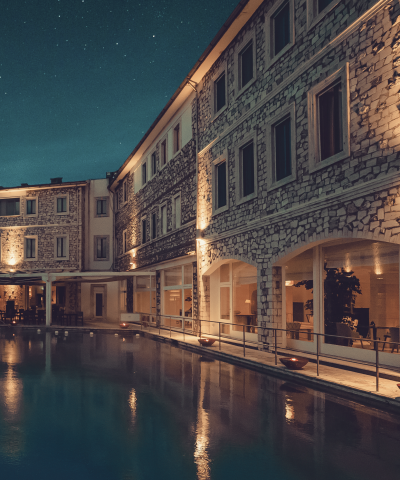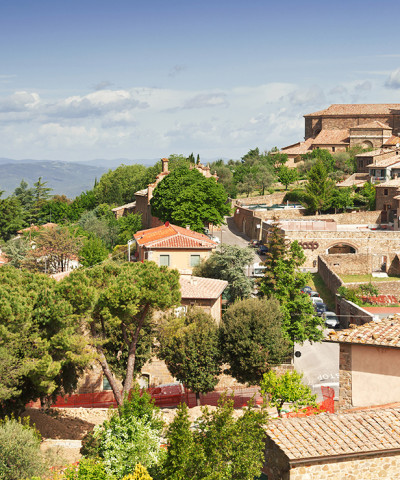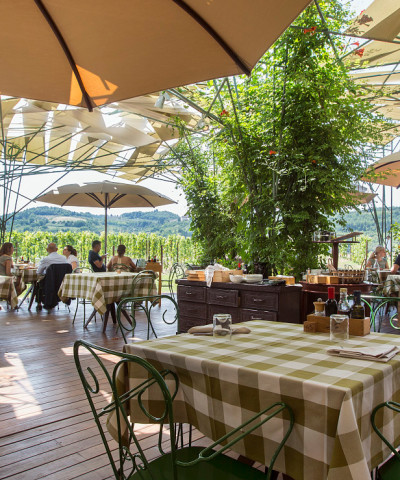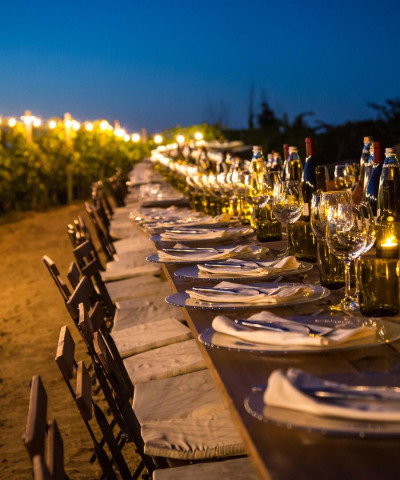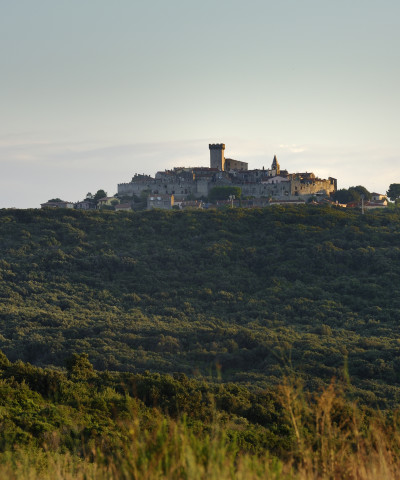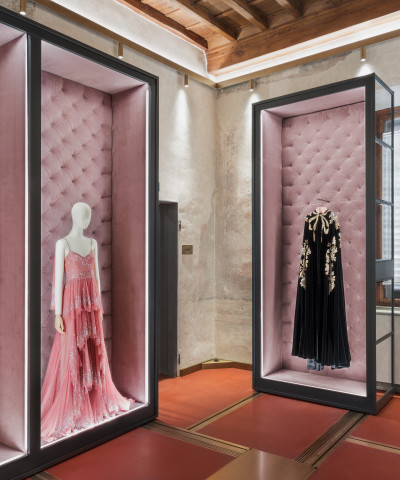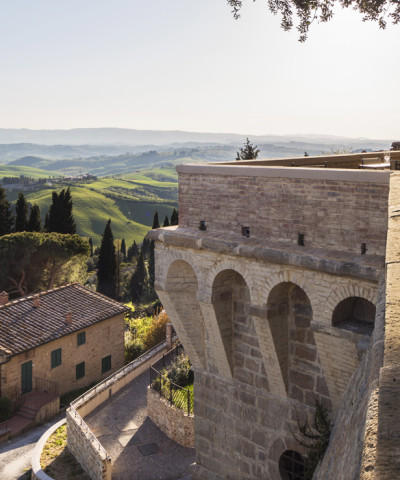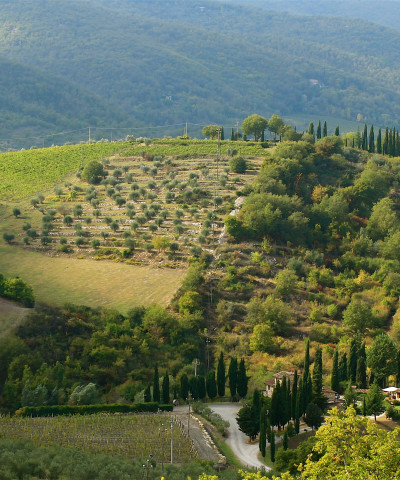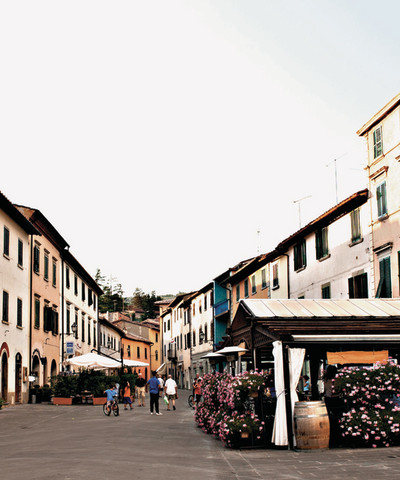The most ancient cellars of Tuscany
An exclusive tour between fine wines
Dark. Damp. Mould. Strong, pungent smells, Carducci comes to mind “the seething vats send forth the pungent smell of wine...”, although you might want the ground to swallow you up if one of today’s new generation oenologists were to hear you talking about the “seething vats” since you’d be sure to be dubbed as something out of the Ark. Yet – assisted or not, corrected or not, sustained or soothed – the natural alchemy is always the same. And it calls for the right surroundings: just try making wine in the full sunlight, in broad daylight, in places hot as ovens. It can be made, certainly. Yes, but how does it turn out!
And so: dark, damp, glazes of mould on the barrels and on the walls, more often than not the amazing thick walls of castles, fortresses, monasteries. Of ancient tombs, reeking of mystery, perhaps. This is the story of the ancient wine cellars of Tuscany: the land that is now home to the cathedrals of wine conceived and moulded by the big names– Mario Botta, Piero Sartogo & Nathalie Grénon, Renzo Piano, Gae Aulenti, Jean-Michel Willemotte, to mention but a few – who have learnt how to press the grapes and age the nectar underground, in the dank and mouldy darkness. And it’s not rare for some large company to decide to continue to refine its finest products in such historic cellars.
Clearly, few of them can have the breathtaking charm of the gorges carved out of the tuff in Sorano and Pitigliano, in Maremma where the Etruscan princes had themselves buried laden with gold and jewellery. In Pitigliano and Sorano the cellars are part of the staggering invisible city that runs in the underground veins, in a labyrinth of grottoes, shafts and tunnels carved out from what were once tombs, barns, rock dwellings and grain wells, adapted to create cellars.
A genuinely breathtaking visit, although not to be recommended for those who suffer from claustrophobia or a fear of the underground. In Sorano, you have to know someone, because the cellars belong to the farmers who make their wine there, generally red; in Pitigliano however, you can apply for example to the Cantina Cooperativa, 0564-616133 or www.cantinadipitigliano.it.
Built instead into the ancient wall circle that represents the city fortifications are the historic Contucci cellars in Montepulciano, the city lauded for the excellence of its wines, Nobile. The Contucci cellars, eight centuries old, are still arranged over three floors, as they were laid out fifty years ago by the vintner Arduino Pallecchi. There are vats for the vinification of two thousand hectolitres, and casks in oak and chestnut for the ageing of two thousand three hundred hectolitres of wine. Guided tours should be booked on 0578 757006 (www.cantinacontucci.it).
A fine story linking the wine to the city is that of San Gimignano and its Vernaccia, which enthusiasts of the great full-bodied whites may turn up their noses at, but which in terms of history is every bit as good, if it is true that even Boccaccio spoke of it and that over many long centuries Popes and crowned heads were crazy about it. In the world of the Vernaccia the prize for longevity goes to the vineyards of the Guicciardini Strozzi and the name of Cusona, which already appeared in documents before the year one thousand. The hospitality of the princes has always been celebrated by illustrious friends; once they were the Grand Dukes, of which Cosimo Ridolfi leaves a delightful record in one of his poems, today they are Tony Blair and Andrea Bocelli, to mention but a pair. The underground galleries as we see them today date to 1850, and it is a fine sight indeed to see the rows of barriques lined up beneath the ancient vaults. For visits: 0577-950028, www.guicciardinistrozzi.it.
Naturally a tour of the oldest cellars to be visited cannot leave out Chianti Classico. Starting with the Castello di Volpaia, laid out in all its austere and serene beauty on the hills between Radda and Panzano: there’s one cellar in the ancient palazzetto of the Strozzi, and another in the village that has always plied the cellar trade. And then the underground cellars for the barriques, beneath the church of San Lorenzo and under the Commenda, and the cellar in Via Castellana. The visit, by appointment, lasts one hour: 0577.738066 and www.volpaia.it.
Just a little beyond the settlement of Greve, again in a northerly direction towards Florence, looming amidst the hills we come to the pile of the Castle of Verrazzano, family residence of the great navigator who was the first to arrive in what is now the Bay of New York. Thousand-year-old cellars, but still in use, built into the walls, to be admired also for their splendid collections and the precious vintages laid up mostly in the master’s quarters, tel. 055 854243, www.verrazzano.com.
Another idea: the Le Corti villa and the farm and the exquisite hospitality of the princes Duccio and Clotilde Corsini. Fifteenth-century villa, cellars dating to the seventeenth, spacious rooms beneath the splendid garden for the processing and refining of Chianti Classico. And a real gem: the oldest and largest oil cellar in the whole of Chianti, where an oil that is a genuine syrup is produced. Tel. 055.829301, www.principecorsini.com.
Chianti still, but a different district: here we are in the territory of Rufina, the northernmost Chianti. And also the highest, precisely in the estates of the Frescobaldi family, Nipozzano and Pomino. Ancient castles, one of which – Nipozzano – was originally a military bastion, and later the centre of life of the namesake hamlet. The other, Pomino, was an aristocratic residence built in the sixteenth century, but already by 1734 acknowledged for its excellence by the Grand Duke Cosimo III. It was in fact in Pomino that the Frescobaldis began to make international wines in the middle of the nineteenth century. Now they repose and refine in the barriques of the well-ordered cellars of the two castles, under a wood-beamed ceiling in Nipozzano, and between arches and columns in Pomino. Tel. 055.27141, www.frescobaldi.it.
The last example of a fine cellar to be seen takes us far back in time, to twelve centuries ago when the name of Capezzana and its wines appeared for the first time. Here we are in the territory of Carmignano, the first international area of Tuscany, in the realm of the Contini Bonacossi family which now runs the estate. Beneath the villa are the sixteenth-century cellars: dark, dank rooms, long corridors, cellars for the barriques and the big casks for the vinsanto that has won prizes as the “best dessert wine in the world” and for the supertuscan. As Gabriella, the manager, says “People come from all over the world to see our cellars”. And guess what they’re most struck by. Of course: “ the damp, the dark, the glaze of mould”. The discreet charm of an underground world. Guided tours morning and afternoon from Monday to Friday and Saturday morning. Capezzana: tel. 055.8706005, www.capezzana.it and gabriella@capezzana.it.










